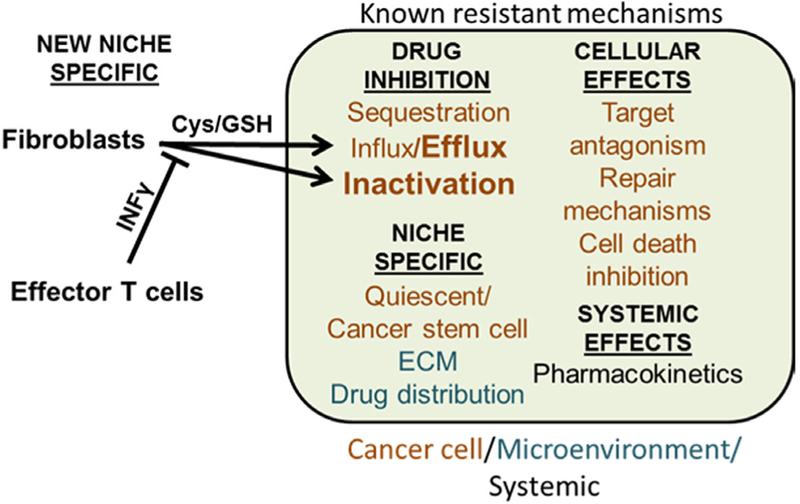Figure 1.
Schematic diagram of known chemotherapy resistance mechanisms in solid tumors and a new mechanism proposed by Wang et al. The drug can be inhibited from reaching tumor cells by pharmacokinetics and insufficient drug distribution to the tumor. Tumor cells may be dormant or receive support from stromal fibroblasts and extracellular matrix (ECM). Within the tumor cell, pathways exist to reduce availability and inhibit the target effects through enhanced repair or decrease cell death. The pathway reported by Wang and colleagues shown in bold, now implicates the role of cysteine (Cys) and reduced glutathione (GSH) secreted by fibroblasts. These antioxidants inhibit cisplatin by binding the drug and enhancing the efflux of cisplatin through transporters. This molecular mechanism contributes to fibroblast-mediated cisplatin resistance in cancer cells. In the presence of effector T cells secreting interferon-gamma (IFNγ), IFNγ lowers the levels of GSH in tumor microenvironment by inhibiting the transport of cystine into fibroblasts. Since cystine serves as a precursor for Cys, which is required for the synthesis of GSH, decreased transport of cystine into fibroblasts resulted in decreased synthesis of GSH. Therefore, the presence of effector T cells abrogates fibroblast-mediated cisplatin resistance in cancer cells.

